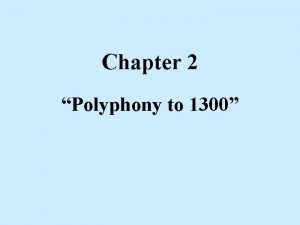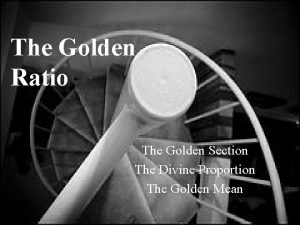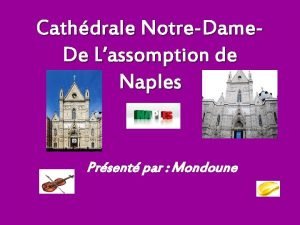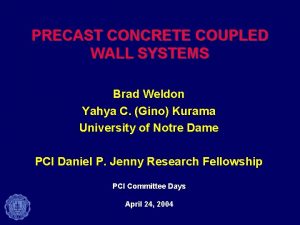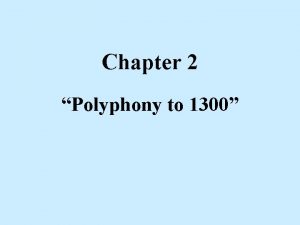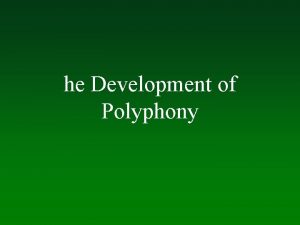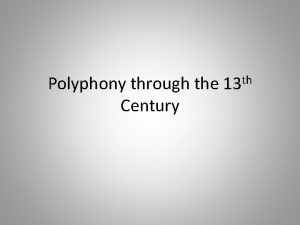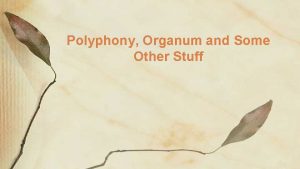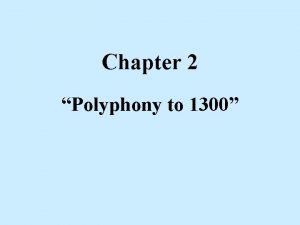Chapter 2 Polyphony to 1300 Notre Dame Organum








- Slides: 8

Chapter 2 “Polyphony to 1300”

Notre Dame Organum • New Building - begun in 1163 • Magnus Liber Organi (not an actual book) (3 primary sources) • Extensive repertoire of polyphonic mass pieces - 2 vv = Léonin - 3 vv & 4 vv = Perotin • Described by Anonymous IV Cathedral of Notre Dame (Paris)

Notre Dame (Paris) Nave

Léonin (fl. c. 1150 s – 1201) • Two-voice organum • Two types • Free/unmeasured (no meter) • Measured (rhythmicized) - “Discant Organum” • Chant in lower voice • Léonin - Christmas Mass (Gradual: “Viderunt Omnes” – 8: 07) • Anthology I/11 Wolfenbüttel 628 = W 1 (25 r)

Perotin (fl. c. 1200) • Quadrupla and Tripla • Lowest voice holds the Chant (tenore) • Upper voices move rhythmically • “Rhythmic Modes” - based on ligatures • Perotin - "Viderunt omnes" (quadrupla) • Anthology I/12 Florence I. 29 = “F” (1 r)

Clausula “in seculum” clasulae • Discant organum - rhythmicized • Self-contained musical unit (based on text) • Substitute sections - “assemble” the mass - all text performed • Ex. Clausula on “Dominus” (for Gradual: “Haec dies”) – Anthology I/13

Motet • Factum est salutare / Dominus (Anthology I/14) • Clausula re-texted (!) • “mot” [Fr. ] = “word” [Eng. ] • Chant fragment at bottom • Duplum (motetus) above • 3 vv Motets add Triplum • Polytexts (multiple languages) • Super Te / Sed fulsit / Dominus (Anthology I/15) • A Paris / On Parole / Frese nouvelle (Anthology I/16)

Mensural Notation • Limits of “rhythmic modes” (early 13 th c) • Franco of Cologne (Franconian notation) - Ars cantus mensurabilis (c. 1260 -1280) • Assigns note values to specific shapes (!) - Long – Breve – Semibreve • Divisions are either duple or triple (see textbook) - triple is “perfection” • Petrus de Cruce (c. 1280) (Petronian notation) - allows up to 9 semibreves in a breve - adds minum and semiminum
